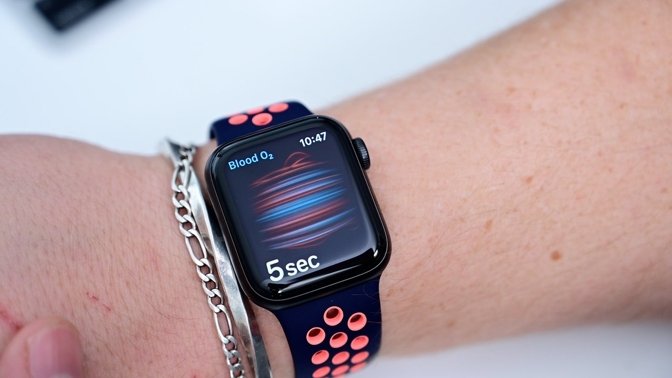Apple Watch and iPhone could assess cardiovascular patient frailty, study finds
The iPhone and Apple Watch could be used as a remote alternative to in-person clinical assessments of frailty in cardiovascular patients, new data suggests.

Credit: Andrew O'Hara, AppleInsider
According to a study published in PLoS One on Wednesday, Apple's iPhone and Apple Watch could allow healthcare providers to remotely assess a heart disease patient's frailty via onboard sensors, as well as an app-based version of the six-minute walk test -- a traditional clinic-based assessment of a person's functional capacity.
The study was conducted by Stanford University and funded by Apple. It compared traditional walk test performance to an in-clinic version measured by iPhone and Apple Watch sensors, as well as a walk test carried out remotely via app. It also incorporated passively collected activity data.
According to the findings, the app-based walk test could accurately determine a patient's frailty. However, there was a slight dip in accuracy when the test was conducted at home. Researchers attribute that to out-of-clinic variability, rather than anything wrong with Apple's sensor suite.
A supervised walk test resulted in device data that could provide an assessment of frailty with 90% sensitivity and 85% specificity. In the at-home tests, those numbers dropped to 83% sensitivity and 60% specificity.
Although the passive activity data was slightly less reliable than an at-home walk test, the researchers suggest that each method could support the remote monitoring of older cardiovascular patients.
"In this study, we showed that smart device-based measurements, including both a 6MWT and passively collected activity data, provide clinically accurate and meaningful insights about functional capacity in patients with [cardiovascular disease]," the researchers wrote.
The study looked at 110 Veterans Affairs patients with a mean age of 68.9 years. All but one were male. Among them, 85% had hypertension, 35% had diabetes, 21% had aortic stenosis, 15% had atrial fibrillation, and 4% had heart failure.
The study was a followup to a previous investigation carried out by the same team in 2018. That study focused on measuring the accuracy of the iPhone's step tracking.

Credit: Andrew O'Hara, AppleInsider
According to a study published in PLoS One on Wednesday, Apple's iPhone and Apple Watch could allow healthcare providers to remotely assess a heart disease patient's frailty via onboard sensors, as well as an app-based version of the six-minute walk test -- a traditional clinic-based assessment of a person's functional capacity.
The study was conducted by Stanford University and funded by Apple. It compared traditional walk test performance to an in-clinic version measured by iPhone and Apple Watch sensors, as well as a walk test carried out remotely via app. It also incorporated passively collected activity data.
According to the findings, the app-based walk test could accurately determine a patient's frailty. However, there was a slight dip in accuracy when the test was conducted at home. Researchers attribute that to out-of-clinic variability, rather than anything wrong with Apple's sensor suite.
A supervised walk test resulted in device data that could provide an assessment of frailty with 90% sensitivity and 85% specificity. In the at-home tests, those numbers dropped to 83% sensitivity and 60% specificity.
Although the passive activity data was slightly less reliable than an at-home walk test, the researchers suggest that each method could support the remote monitoring of older cardiovascular patients.
"In this study, we showed that smart device-based measurements, including both a 6MWT and passively collected activity data, provide clinically accurate and meaningful insights about functional capacity in patients with [cardiovascular disease]," the researchers wrote.
The study looked at 110 Veterans Affairs patients with a mean age of 68.9 years. All but one were male. Among them, 85% had hypertension, 35% had diabetes, 21% had aortic stenosis, 15% had atrial fibrillation, and 4% had heart failure.
The study was a followup to a previous investigation carried out by the same team in 2018. That study focused on measuring the accuracy of the iPhone's step tracking.

Comments
It doesn't surprise me that this study has such a small sample size, and we also need to be REEEEAAALLLYY careful about drawing firm conclusions where n<10k. But George is right, this is where medicine is headed. Just for our clinic, dealing with a cohort of ~2500 patients, the thought of being able to issue a device and have the patient walk into the waiting room and the device registers at the door via Bluetooth, data is downloaded and pushed into our analysis software automatically, any urgent issues raise an immediate alert and the others just show up in the visualisations that help the patient gain understanding of their situation and all our clinicians get to spend most of their time answering questions the patient has rather than asking questions of the patient and manually entering the responses... this would make everyone's lives better.
Or, the data could be downloaded and analyzed as it happens -- or daily. There would be no need for the patient to come to your site. How much better would that be?